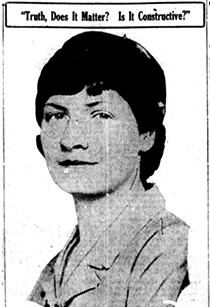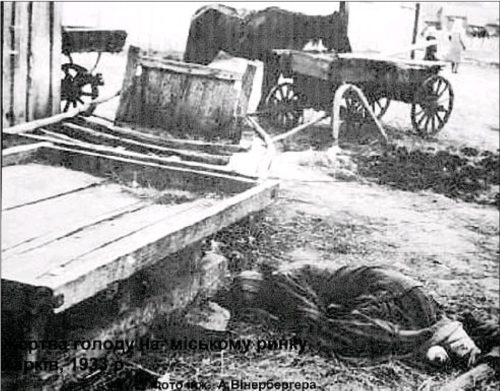Reporting on the Famine (1930-39)
Although it has been commonly assumed that very little was known about the Famine at the time of its occurrence, in fact, it was quite widely covered in the international press. A sampling of materials related to Canadian coverage of the Holodomor can be found below, including about Rhea Clyman, the first journalist to witness and report on the Famine.

In September 1932, a 28-year old freelance journalist from Toronto named Rhea Clyman made an epic journey by car through Ukraine. Her vivid eyewitness reports chronicle the Great Famine, or Holodomor, when it was only beginning to exact its terrible toll.
Balan, Jars. “Rhea Clyman: A Forgotten Canadian Eyewitness to the Hunger of 1932.” In Women and the Holodomor-Genocide: Victims, Survivors, Perpetrators, ed. Victoria Malko. Fresno: The Press at California State University, 2019.
Ріа Клайман: забутий канадський свідок голоду 1932 року
‘Tell the Kremlin we are starving; we have no bread!’ Rhea Clyman’s 1932 Odyssey through the Famine Lands of Ukraine (20th Toronto Annual Ukrainian Famine Lecture delivered by Jars Balan)

“Readers had ample evidence of Holodomor: Despite Soviet censorship, eyewitness accounts of ‘murder by hunger’ reached pages of The Journal”
Article by Dr. Serge Cipko
An article in The Edmonton Journal (November 2008) outlines the coverage the Holodomor received in its pages in 1933, including how Mennonites in Saskatchewan and Ukrainians across Canada were receiving thousands of letters that described famine conditions. In October 1933, Peter Lazarowich opined that the “Russian Soviet government is deliberately determined to starve most of the population of the Ukraine in order to beat it into complete submission to the principles of Communism which the Ukrainian peasant masses have hitherto resisted and repudiated.”

Starving Ukraine: The Holodomor and Canada’s Response
Book by Dr. Serge Cipko
Through an extensive analysis of newspapers, political speeches, and organized protests, Serge Cipko examines both the reporting of the famine and the Canadian response to it, highlighting the vital importance of journalism and the power of public demonstrations in shaping government action.

This selection from the Canadian press provides a sense of what information was available to readers in Canada about conditions in the USSR in 1932 and 1933. A mix of pieces have been chosen—wire service copy, reports by Canadian correspondents, editorials, a letter to the editor, as well as a piece about a Canadian engineer who had recently returned from the Soviet Union. All address famine or starvation, usually in connection with Soviet Ukraine.
HREC is supporting the Kule Ukrainian Canadian Studies Centre in conducting an investigation of mainstream Canadian English-language newspapers, particularly from cities with substantial Ukrainian communities (starting with Winnipeg, the home of the Canadian grain exchange), with the aim of culling material on and related to the Holodomor, such as the agricultural situation in the Ukrainian SSR and Soviet Union overall, and Canadian trade ties with the USSR. Research to date has provided a wealth of material demonstrating that a significant amount of revealing and accurate information about the Holodomor could be found in Canadian dailies during and immediately after the Holodomor, belying the widespread belief that little was known about the famine because of a successful Soviet cover-up. The selection found here represents only a sampling of the coverage of the agricultural situation in Ukraine, the Kuban, and other areas affected by famine in the critical years of 1932–33.